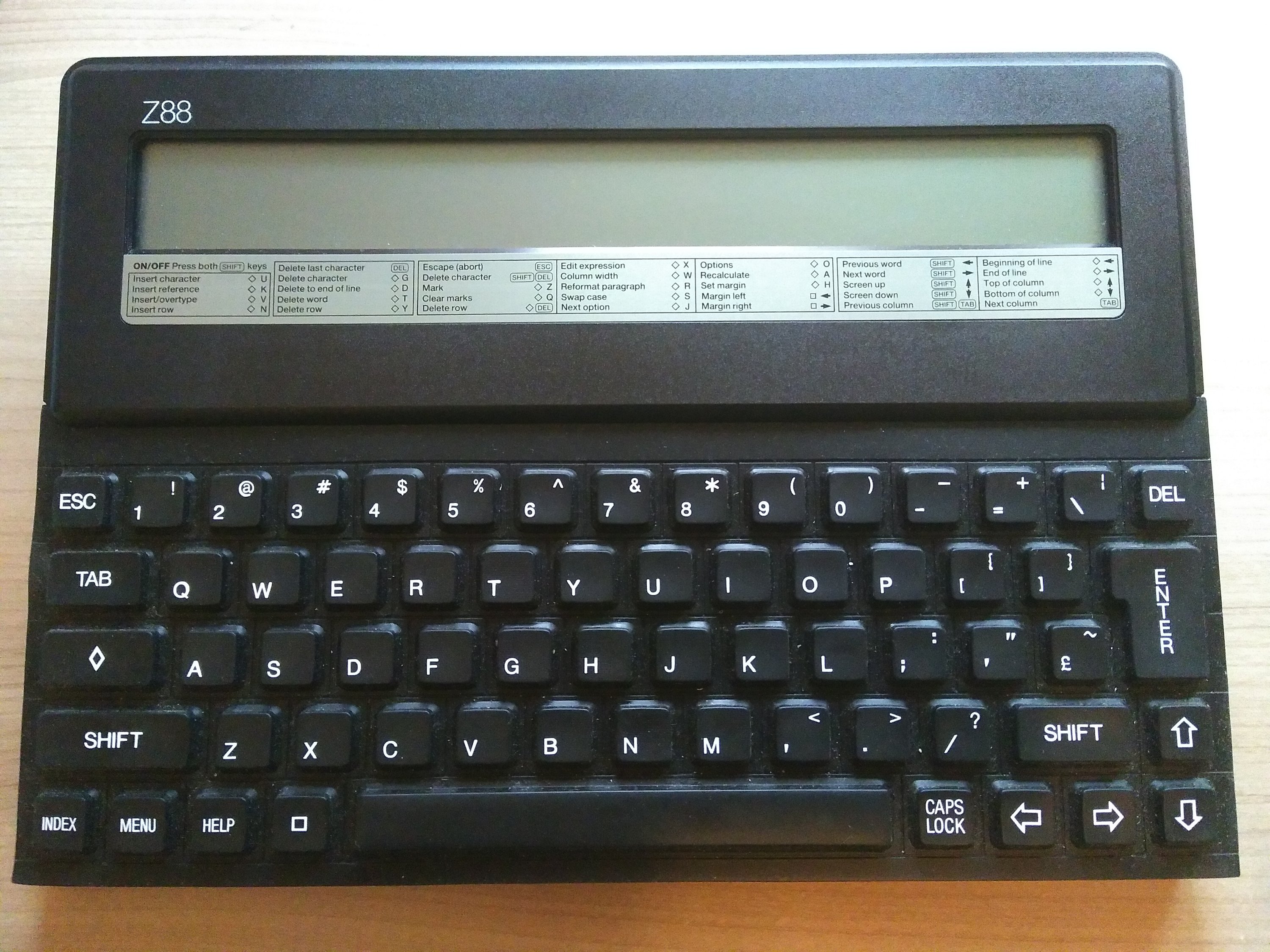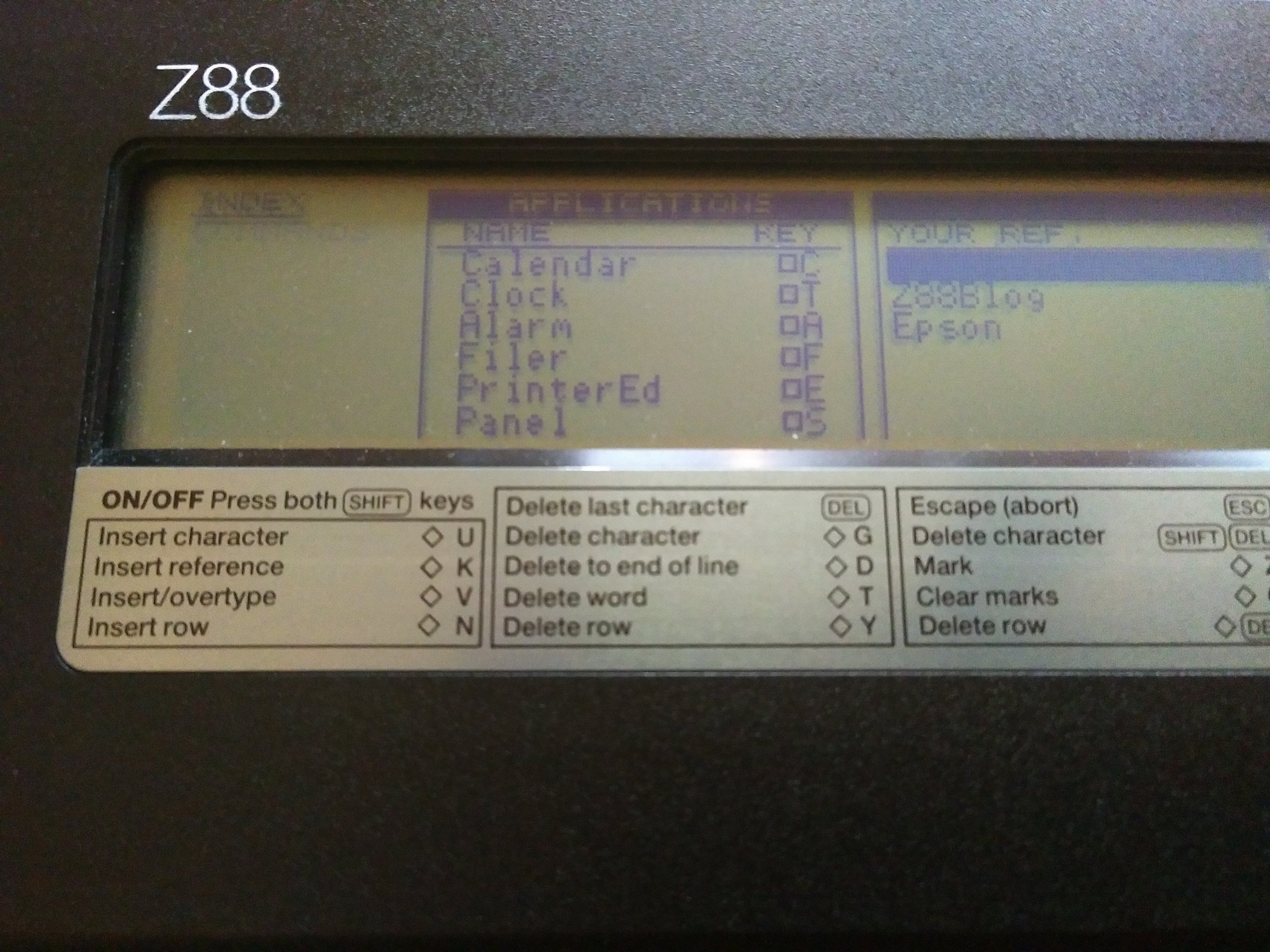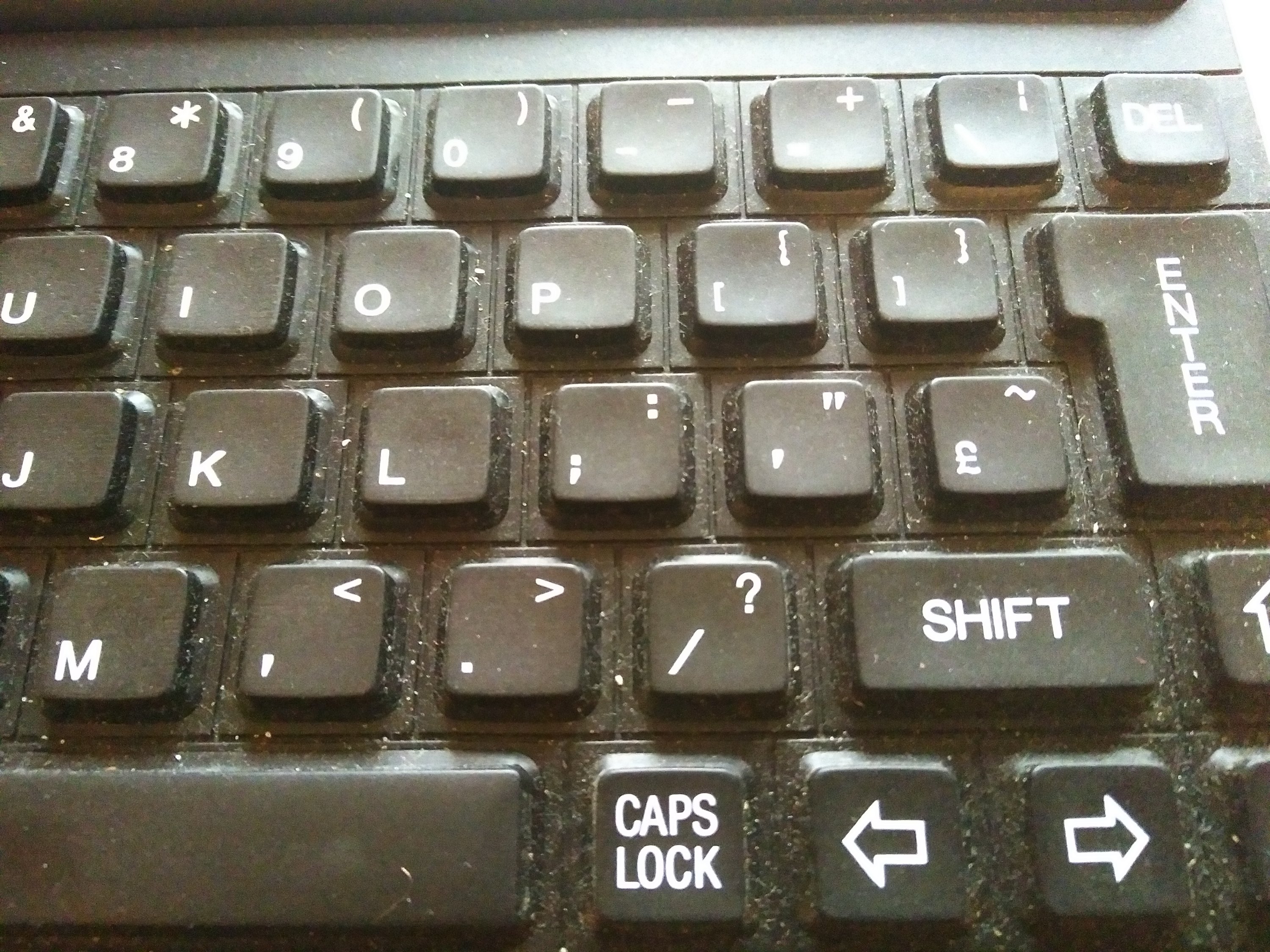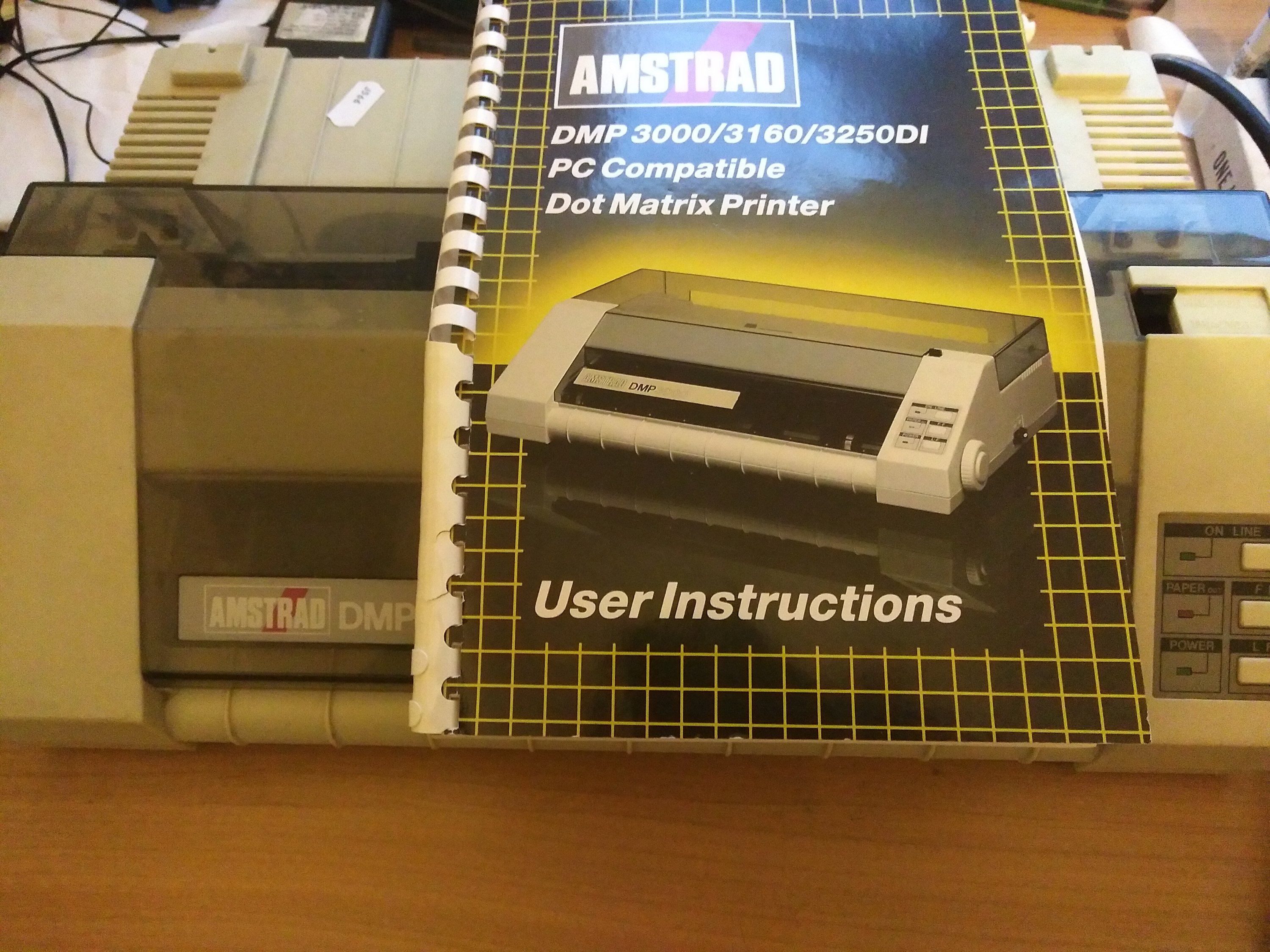You’ll all know by now that I can’t resist the lure of old technology, and some bits of old crap are particularly appealing to me. One of these is the Cambridge Computer Z88. I recently got hold of one.
 It’s likely you’ve not heard of either the company or the machine, as they weren’t around for long – the Z88 was the only machine the company made. However, you will have heard of the brains behind it all – none other than Sir Clive Sinclair.The Z88 came to market in 1987, after Sinclair Research had come close to ruin. The Spectrum made the company a fortune, but it was all gambled on the C5 and QL, which were both dismal failures. Sinclair sold the rights to the Sinclair brand and technology to Amstrad, who continued to successfully develop and market the Spectrum for several years.So, when Clive came to design a new computer, he couldn’t put his name on it. The computer doesn’t actually have any name on it, just prominently bearing the Z88 legend. It turned out to be an extremely unusual product, with no real equal in the market at the time.As you can see, it’s a portable device. It’s roughly the size of a thick A4 pad, with most of the space taken up by a keyboard. In true Sinclair style, it’s made of rubber!
It’s likely you’ve not heard of either the company or the machine, as they weren’t around for long – the Z88 was the only machine the company made. However, you will have heard of the brains behind it all – none other than Sir Clive Sinclair.The Z88 came to market in 1987, after Sinclair Research had come close to ruin. The Spectrum made the company a fortune, but it was all gambled on the C5 and QL, which were both dismal failures. Sinclair sold the rights to the Sinclair brand and technology to Amstrad, who continued to successfully develop and market the Spectrum for several years.So, when Clive came to design a new computer, he couldn’t put his name on it. The computer doesn’t actually have any name on it, just prominently bearing the Z88 legend. It turned out to be an extremely unusual product, with no real equal in the market at the time.As you can see, it’s a portable device. It’s roughly the size of a thick A4 pad, with most of the space taken up by a keyboard. In true Sinclair style, it’s made of rubber! There’s a small LCD screen at the top, for about eight lines of text. It’s powered by four AA batteries, has a Z80 processor, and a unique operating system, called OZ. It has a few built-in programs, including a spreadsheet/word processor called PipeDream, a diary, and a BBC BASIC programming environment. It sort-of multi-tasks, but not very well! It was aimed at business users who wanted a portable machine, and it was the first of a slew of products to appear in the years that followed, before proper PC laptops were affordable.It only shipped with a rather useless 32K of RAM, but thankfully the one I acquired on eBay has extra 128K and 32K packs installed in slots on the front, so there’s room enough to do useful things. The machine has an RS232 port that allows export of data to a PC, which miraculously still seems to work, but I’m not currently able to do that, so I’m writing this on my Alphasmart.What I have got hold of, however, is an Amstrad dot matrix printer, and a Centronics printer lead!
There’s a small LCD screen at the top, for about eight lines of text. It’s powered by four AA batteries, has a Z80 processor, and a unique operating system, called OZ. It has a few built-in programs, including a spreadsheet/word processor called PipeDream, a diary, and a BBC BASIC programming environment. It sort-of multi-tasks, but not very well! It was aimed at business users who wanted a portable machine, and it was the first of a slew of products to appear in the years that followed, before proper PC laptops were affordable.It only shipped with a rather useless 32K of RAM, but thankfully the one I acquired on eBay has extra 128K and 32K packs installed in slots on the front, so there’s room enough to do useful things. The machine has an RS232 port that allows export of data to a PC, which miraculously still seems to work, but I’m not currently able to do that, so I’m writing this on my Alphasmart.What I have got hold of, however, is an Amstrad dot matrix printer, and a Centronics printer lead! The printer came with an entirely dried out ribbon. Replacements are rare and expensive, so I had a look around for hacks to overcome the problem. I attempted re-inking the ribbon, but this was messy and only partially successful. The answer is actually to use carbon paper sandwiched between two sheets of normal paper – I found a pack in my local Rymans, and then proceeded to type a letter on my Z88 in Costa. I successfully printed it when I got home! It was blue and a bit faint, but it did work.There you go – the thing is useful! I’ve done some actual work on it! PipeDream is a perfectly acceptable, if oddly quirky, word processor, but most of the other built-in software is a bit pants. The diary is almost impossible to use, which is a shame. The keyboard makes up for it, though. It’s completely silent in operation, and does feel quite amenable to reasonably rapid touch-typing. I think it’s got to be worth trying to get it to connect with a PC, as then it’ll be much more useful – I can transfer text into other applications, and take documents with me to work on when I’m out and about. Watch this space.In all honesty, I probably won’t use it much, but it’s great fun to use and mess about with now and again, and it’s an interesting chapter in computing history, so I’m glad I got hold of it. I’ll write a blog on it as soon as I can!
The printer came with an entirely dried out ribbon. Replacements are rare and expensive, so I had a look around for hacks to overcome the problem. I attempted re-inking the ribbon, but this was messy and only partially successful. The answer is actually to use carbon paper sandwiched between two sheets of normal paper – I found a pack in my local Rymans, and then proceeded to type a letter on my Z88 in Costa. I successfully printed it when I got home! It was blue and a bit faint, but it did work.There you go – the thing is useful! I’ve done some actual work on it! PipeDream is a perfectly acceptable, if oddly quirky, word processor, but most of the other built-in software is a bit pants. The diary is almost impossible to use, which is a shame. The keyboard makes up for it, though. It’s completely silent in operation, and does feel quite amenable to reasonably rapid touch-typing. I think it’s got to be worth trying to get it to connect with a PC, as then it’ll be much more useful – I can transfer text into other applications, and take documents with me to work on when I’m out and about. Watch this space.In all honesty, I probably won’t use it much, but it’s great fun to use and mess about with now and again, and it’s an interesting chapter in computing history, so I’m glad I got hold of it. I’ll write a blog on it as soon as I can!